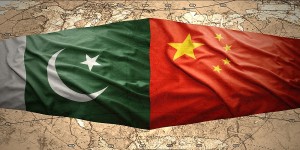CPEC LINKAGES OF PEACE & PROSPERITY
We should be thankful to US Assistant Secretary of State, Alice Wells, for at least showing some concern about Pakistan’s interests. She is worried that China is not sincere with Pakistan and its CPEC projects with Pakistan are not an aid but rather a form of loans that ensured guaranteed profits for state-owned Chinese enterprises. According to her, the multibillion-dollar project would take a toll on Pakistan’s economy at the time of repayment of the loans. Both China and Pakistan promptly rejected the US claim that CPEC benefits China more than Pakistan. Both defended CPEC as a joint venture of mutual benefit.
Chinese Ambassador Yao Jing was more forthright in asserting that Pak-China relations are based on “win-win cooperation” for both, and are mutually beneficial. He expressed astonishment over Wells’ statement of higher tariff at power plants established under CPEC. “In 2013, when Chinese companies were establishing power plants in Pakistan,” he asked, “why didn’t the US come forward and invest in Pakistan’s power sector despite knowing that Pakistan was in dire need of electricity.” He said China was always there when Pakistan was in need of assistance. Unlike the Western-controlled IMF repayment system, China never asked for repayment of loans on time.
He expressed astonishment over Wells’ statement of higher tariff at power plants established under CPEC. “In 2013, when Chinese companies were establishing power plants in Pakistan,” he asked, “why didn’t the US come forward and invest in Pakistan’s power sector despite knowing that Pakistan was in dire need of electricity.” He said China was always there when Pakistan was in need of assistance. Unlike the Western-controlled IMF repayment system, China never asked for repayment of loans on time.
All said and done, this verbal feud shows one thing. US Assistant Secretary Alice’s statement was nothing but yet another reflection of the US aversion to the very concept of CPEC. It has always been opposed to CPEC which it views as part of China’s expanding global outreach. To understand the reality, one needs to have a clearer understanding of the China-Pakistan Economic Corridor (CPEC) project. It is a $62 billion, China-funded ‘flagship project’ within China’s Belt and Road Initiative (BRI), which is fast heading towards closure of ‘early harvest’ projects. With five energy projects commissioned and several more on course, these will surely help lift Pakistan’s economic output.
The CPEC connects western China with Gwadar port on Pakistan’s southern coastline in Balochistan province. Along the Corridor route, the plan envisages connectivity thorough road and rail networks, power production units and Special Economic Zones (SEZs). CPEC, as a flagship of all the BRI corridors, sets the tone for others. President Xi Jinping had announced the BRI plans during his visits to Kazakhstan and Indonesia in 2013. Comprising the Silk Road Economic Belt and the 21st Century Maritime Silk Road, the two modern versions of the ancient Silk Route were to provide transcontinental connectivity of trade and economy.
At an APEC Partners’ Conference in Beijing in October 2014, President Xi Jinping explained his larger connectivity vision, stressing that this initiative will provide multidimensional linkages side by side in five areas: coordination of policies, connection of infrastructures and facilities, trade liberalization, free flow of capital and people-to-people contacts. China attaches special importance to having the CPEC project completed in three phases by 2030. Involving only one country, i.e. Pakistan, the CPEC provides China with direct access to the Indian Ocean. The route shortens western China’s distance to the Arabian Sea from 13,000 km to just 3,000 and cuts the transit time from 45 days to only 10.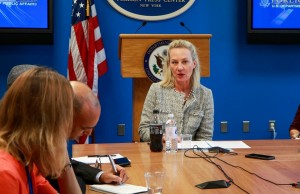
Gwadar port is 400km from the Strait of Hormuz, the critical choke point in the Persian Gulf, through where the bulk of China’s energy needs pass. Nearly 80 percent of China’s imports pass through Strait of Malacca. Both of these straits make China extremely vulnerable in case tensions flare up around them. The CPEC with Gwadar at its terminal puts China at the doorstep of Hormuz and could eliminate the Malacca route completely. Notwithstanding its grand vision and the speed at which the project has taken off, the CPEC continues to face multiple challenges.
When the BRI was formally launched in 2017, there were three significant holdovers: India, Japan and the United States.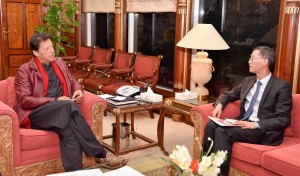
The US was taken aback when some of its closest allies within NATO and Asia-Pacific rushed to join in. The project, as it is conceived and is being developed, creates shared benefits, and no nation wants to be left out. These three countries are doing so at their own peril. In attempting to preempt the Chinese, and thus the Asian Century, they risk being on the wrong side of history. India, in particular, as an avid objector, sees the BRI initiative, and more specifically the CPEC, as China’s attempt to circle India through this connectivity. Gwadar, to Indian policy-makers, is part of the ‘string of pearls’ ports that China is aiming to control around India.
The 40-year management agreement over Gwadar and the lease for SEZ gives China a toehold into the Indian Ocean. CPEC allows China the possibility of a naval presence close to India’s western coastline, which together with Pakistan’s antipathy will become a challenge for India. India also objects to CPEC route that traverses the Gilgit-Baltistan region, part of erstwhile state of Jammu and Kashmir, contested by India and Pakistan. The Americans have always echoed the Indian viewpoint. Both conveniently forget that under the 1960 World Bank facilitated Indus Waters Treaty, Mangla Dam is located within this contested state and both contributed money for its construction. Why object now?
It’s all power politics driven by America’s China-driven agenda. Both China and Pakistan, on the other hand, have always denied India’s objections, and insist that CPEC is only aimed at expanding the region’s linkages of peace and prosperity, and have repeatedly invited India to come on board. CPEC has no geographical boundaries. If anything, it will foster regional harmony and forge closer relations among China, Pakistan and their neighbours with no exclusivity or selectivity. It will directly benefit over 3 billion people in China, South Asia, Central Asia and Middle East. On completion, the CPEC will bring overarching economic and trade connectivity, bilaterally as well as regionally.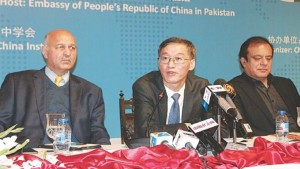
For China and Pakistan, CPEC will instil greater vitality and a stronger strategic as well as economic content to their all-weather friendship. For both, this indeed is a huge agenda with mutual interests rooted in their common vision for a better future for their own peoples and for peace and prosperity of the region itself. For China, it is the ‘national rejuvenation’ through accelerated development of its backward western regions, whereas for Pakistan, it is the imperative of converting its geopolitical location into an asset rather than a liability. The real challenge for both now remains how vigorously and faithfully they can translate this common vision into reality.
Both sides will have to sharpen their implementation machineries, removing bureaucratic and procedural impediments. On their part, the Chinese have always delivered on their commitment. The problem is on our side. Given its strategic importance and geoeconomic benefits, CPEC should have been managed and implemented by us along the lines we did in the case of our nuclear programme. For unhindered, smooth implementation of CPEC, we in Pakistan needed an independent, high-level autonomous authority to exercise an overarching control of the project in all its aspects, free of bureaucratic and procedural bottlenecks and political encumbrances. It’s never too late.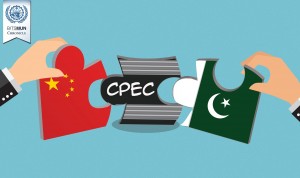
We still can revert to the above special arrangement through a legal policy framework. Our first and foremost responsibility is to provide the needed political support and requisite security framework for its smooth, unhindered implementation. In implementing this Corridor, China and Pakistan are not striving to merely leverage geography for economic prosperity; they are trying to build a peaceful, connected and prosperous neighbourhood, and would welcome other countries in the region including India as their partners in CPEC. But India has its own paranoid reasons to oppose the BRI and more specifically the CPEC. It must opt for peace rather than continuing to ride its hegemonic ambitions.
The writer is a former foreign secretary.
 Jahangir's World Times First Comprehensive Magazine for students/teachers of competitive exams and general readers as well.
Jahangir's World Times First Comprehensive Magazine for students/teachers of competitive exams and general readers as well.

